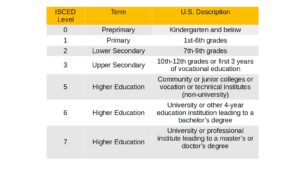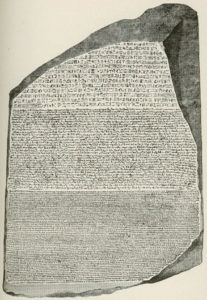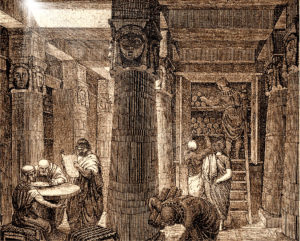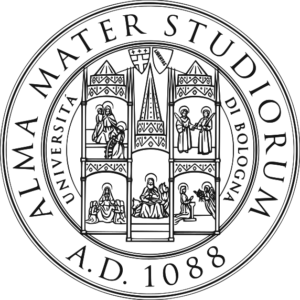
There have been many books written about the historical development of American higher education, particularly its colleges and universities. Much less has been written about higher education in the rest of the world, especially prior to the fourteenth century. This brief 1,000-word synopsis can’t touch on everything. It is meant only to highlight what I believe to be the most pertinent phases in the evolutionary process which has given us today’s higher education enterprise in America and our modern universities and colleges.
I begin with a definition of education: Education is the process of facilitating learning, or the acquisition of knowledge, skills, values, beliefs, habits, and culture. From that starting point, what are the various levels of education? In particular, what is higher education?
Throughout most of today’s world, education is associated with schools and the process of schooling. Since 1945 the United Nations Educational, Scientific, and Cultural Organization (UNESCO) has attempted to standardize the definitions of educational levels in order to collect, organize, and analyze education statistics on a worldwide basis.
In pursuit of this goal, UNESCO issued its first classification system in 1970 and has revised it several times. The most recent revision of the International Standard Classification of Education (ISCED) was published in 2011.
In the United States the National Center for Educational Statistics (NCES), a subdivision of the Institute of Education Science (IES), is charged by the federal Department of Education with keeping tabs on educational statistics in the United States and reporting that data to UNESCO.
NCES uses a slightly different format for reporting U.S. data than ISCED recommends. However, the two formats can be reconciled using the following crosswalk equivalencies:


From the above chart, it is obvious that education is clearly being tied to organized schools and the formal process of schooling. This has not always been the case. From historical legends, archeological records and anthropological observations of primitive peoples and tribes, it is believed that the earliest education of young children was the responsibility of family units as illustrated in the picture to the left. This education consisted primarily of simple survival skills. Young children were also taught the rudimentary communication skills of gesturing and the oral language of the parents.
The next phase of education coincided with the coalescence of families into communities and tribes. As families joined together with other family units, education evolved into a communal activity involving the whole community. In addition to more intricate survival and communication skills, social integration skills on how to live in groups were necessarily included in the education of the young.
These additions brought about the need for more specialized instruction which was satisfied by the appearance of master teachers. These master teachers were excellent communicators who could help the uninitiated acquire new knowledge, skills, beliefs, and values. They developed reputations and became much in demand.

About this time in history, communications took on a new twist. The oral transmission of knowledge and culture was susceptible to transmission errors. Mankind began to transform oral language and gestures into symbols which were carved or pressed into stone or clay tablets. These symbols morphed into a written language which was inscribed on animal skins, tablets, or papyrus scrolls. The teachings of the best of the master teachers were transcribed and preserved for posterity.
The most well-known master teachers became legends: Confucius (China); Buddha (India); Plato, Socrates, Aristotle, Archimedes, Pythagoras, and Thales (Greece); Muhammad, Hillel, and Gamaliel (Middle East). Potential disciples traveled many miles to sit at their feet and listen to them in order to soak in their wisdom. Their teachings were recorded by these disciples and are still studied today. This was the higher education of the ancient world.

The master teacher who really changed the world lived in the Middle East and taught for only three years. Jesus began His ministry by selecting 12 unlikely individuals as his disciples. He spent three years traveling around Judea, healing the sick, raising the dead, doing other miracles, and teaching his disciples and many other followers. His death and resurrection formed the basis of Christianity. Eleven of His original disciples, along with a later convert, Saul of Taurus (also known as the Apostle Paul), spent 60 years after Christ’s ascension into heaven evangelizing the known world. The effects of their labors, some twenty centuries later, are still being felt.
For the first millennium after Jesus, it almost seemed that higher education went into hiding. Master teachers were harder to find. Those, who lived and taught, have been mostly forgotten in the passage of time. The period of time from the Fall of Rome to the Renaissance evidenced an apparent absence of serious intellectual activity in the Western World. This may be the reason that this era is known as the Dark Ages.
In Western Civilization, higher education was on life support during the Dark Ages. It was kept alive by nobles, the elites, and the wealthy, who hired tutors to teach their prodigies sufficient knowledge and culture so that they could maintain their family place in the ruling scheme of things.

In the remainder of the world, higher education was kept alive by the noble families, organized religion, and a few cities or states. Judaism had its yeshivas. Islam had its madaris. Hinduism had its mathas. Buddism had its schools for monks. In general, Eastern Civilization was more amenable to an open system of higher education than the West. A number of cities had schools which made education available to all worthy and deserving individuals, not just the wealthy, elite or connected few.

With the Rennaissance came the rebirth of higher education in the Western World and the founding of universities. The University of Bologna, founded in 1088, is the oldest university in continuous operation. Unfortunately, I have reached my self-imposed 1,000-word limit, so I will pick up the story of American higher education this coming Tuesday. Until then, class dismissed.